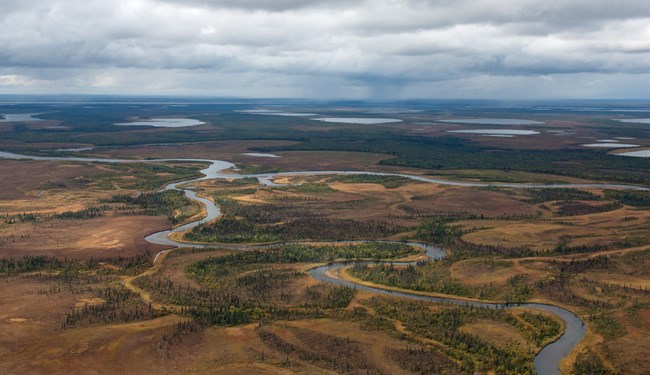Learn about NRCAs
The Natural Resource Condition Assessment (NRCA) Program provides framework, funding, and publishing support to parks to aid in the synthesis and documentation of natural resource conditions. Condition assessment reports are a tool to describe selected park resources, and record a snapshot of their current condition, identify trends, and identify potential or current threats and stressors. Understanding the condition and trend of natural resources is key for parks and NPS planners to appropriately prioritize and allocate stewardship resources.

NPS Photo.
The Alagnak Wild River protects a river system necessary for the perpetuation of the Bristol Bay sockeye (red) salmon fishery, the heartbeat of the economy, culture, recreation, and history of southwest Alaska. Alagnak Wild River’s rich archeological record reveals a remarkable history of diverse and traditional users that provide depth to our understanding of cultural development across the Americas.
Traditional NRCA Report: 2015
In an effort to better understand the natural resources and processes, a Natural Resource Condition Assessment was conducted and published in 2015. National Park Service representatives and Saint Mary’s University of Minnesota collaborated to evaluate the park needs and available data. Katmai National Park and Preserve and the adjacent Alagnak Wild River were assessed together. Theis team chose 11 resource topics to assess:
- Invasive and non-native species |
- Native fish |
|||||
- Moose |
- Seismic activity |
|||||
- Bear |
- Climate |
|||||
- Passerines |
- Human activity |
|||||
- Salmon |
- Glacial extent |
|||||
- Water quality |
Overall, the conditions in Katmai National Park and Preserve, and Alagnak Wild River were of low concern, or were not assigned condition ratings due to lack of data. Many of the park’s data needs involve the challenge of determining ways to effectively sample and monitor biological phenomena in order to increase statistical confidence and to ensure long-term monitoring techniques are possible. A consistent but opportunistic and flexible approach to population surveys is necessary to gather data and improve analyses.
For other reports and natural resource datasets visit the NPS Data Store.
Source: NPS DataStore Collection 7765 (results presented are a subset). To search for additional information, visit the NPS DataStore.
Last updated: December 16, 2022
